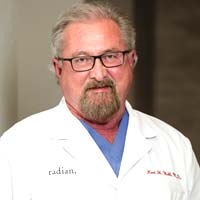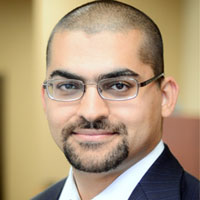Hair Restoration Robotics Device ARTAS System Gets Canadian Medical Device License
Restoration Robotics, a provider of medical devices, announced it has
obtained Canadian Medical Device License for its innovative ARTAS
System. The license allows the company to market the product in Canada.
Launched in August 2011, the ARTAS System is a physician controlled
robotic device that allows hair surgeons to quickly identify and harvest
healthy follicular units directly from the patient's scalp during hair
transplantation. Through its innovative design and ease-of-use, the
ARTAS System will enable physicians to offer this minimally invasive
hair procedure to their patients.
The ARTAS System employs
precision robotics and image guided technology for consistent, safe, and
positive outcomes with the treatment. The system has been developed
with collaboration with various distinguished hair restoration surgeons.
It has also achieved 510K clearance from the FDA.
The ARTAS
System has created a revolution in hair restoration field and has
already gained popularity in the United States. Vincent DeLany was the
first patient to be treated by James Harris, MD, of the Hair Sciences
Center of Colorado (Denver, CO), soon after the official launch of the
product in the U.S.
Conventional hair restoration surgeries are
tedious and demand great deal of intervention from hair surgeon. The
robot-assisted ARTAS System helps physicians rapidly detect and collect
healthy follicular units from the patient’s scalp directly. The ARTAS
System’s convenient design and accessibility ensure minimally invasive
hair transplant procedures, according to company officials.
Since ARTAS
System results in a less invasive procedure to extract follicles, it
is gaining popularity among patients who want to regain the original
appearance. Traditional hair loss surgeries like Follicular Unit
Transplant (FUT) involve surgical removal of hair follicles, which
leaves a long and permanent scar on the scalp of the head. Follicular
Unit Extraction (FUE) on the other hand, involves extraction of
individual hair follicles, allowing for a non-invasive and painless hair
transplant in men suffering from androgenic alopecia. The ARTAS System
is widely used in FUE procedures.
"The ARTAS System is quickly
being embraced by top hair restoration surgeons and their patients in
the United States and we are now excited to offer this state-of-the-art
technology in Canada," said Jim McCollum, chief executive officer,
Restoration Robotics.
With ARTAS System, Restoration Robotics
eyes the highly potential hair restoration market. According to the
International Society of Hair Restoration Surgery (ISHRS), at least 35
million men in the United States are affected by male pattern baldness
or androgenic alopecia. By age 50, approximately 50 percent of men will
experience some degree of appreciable hair loss.
Hairfear.com
Frequently asked questions about hair transplant procedures
How much does a hair transplant cost?
Hair transplants can vary in price based off of the area in the world that you are interested in getting a hair transplant as well as the size of the area where you may need a hair transplant. Experienced doctors in the United States will often charge some of the highest prices for a hair transplant worldwide and this is why so many travelers make the move to other parts the world like Turkey, India, Thailand, Mexico...etc for their hair transplants.
Will a hair transplant hurt?
Although hair transplants may look like a particularly
unpleasant or painful experience is actually very little discomfort involved
with the surgery itself. Hair transplants are always done under an anesthetic so there's absolutely zero pain during the treatment itself. Many people actually relate the process as being very similar to going to the dentist for filling or root canal. Mild pain can persist over the course of postop treatment but he generally just resumes for a few days.
Who can deliver the best surgery?
It's usually best to consider working with surgeons who have and IAHRS certification or international alliance of hair restoration surgeons recognition. IAHRS can often deliver recommendations for the best surgeons in each particular area.
Is this scarring noticeable?
Any type of hair transplant will require the use of incisions throughout the scalp. There can also sometimes be a small scar from the donor area towards the back of the scalp. Asking to look at photos of the surgeon's previous work will help you to see roughly how bad the scarring could be. In most cases an experienced professional can limit the look of scarring and noticeable marks from the surgery.
How long does it take for the hair to grow?
In most cases hair growth will start within eight months and you can start to see a full effect from the hair transplant after a full year. The initial signs of growth can usually start between 3 to 4 months after the surgery.
Are the results permanent?
The hair follicles that are transplanted are generally the ones which are genetically resistant against the symptoms of baldness. As long as you receive hair loss treatment later in your life after the symptoms of balding have started to subside, you can have a better chance at permanent results.
While everyone know you've had surgery?
If you want to limit the chance that people may find out about your surgery it's important to give at least three weeks of healing as the surgical area will be affected and red just after surgery. After around a month of healing it can look far less noticeable. You could consider wearing a hat while time passes or opting for some extra time off if possible.
How long should I rest after surgery?
It's recommended to rest for at least a few days after surgery so that your body can recover. Trenton to over exert yourself and limit sexual activity, running in the gym for around 10 days after surgery.
Is it possible to lose more hair as a result of surgery?
There is always a chance of shock loss which happens when the hair is weak and miniaturizing after the surgery. As long as the surgeon is choosing the correct hair follicles and performing the surgery well it's possible to minimize the chance of this happening however.
Will I need another hair transplant?
The need for another transplant really depends on the individual. With a solid foundation surgery and working to potentially bolster results with drug therapy, you can improve the stability of the hair that was transplanted as well as prevent further loss. Getting a hair transplant early
on in your 20s or early on in life could lead to needing long-term transplants as hair loss can be progressive.







